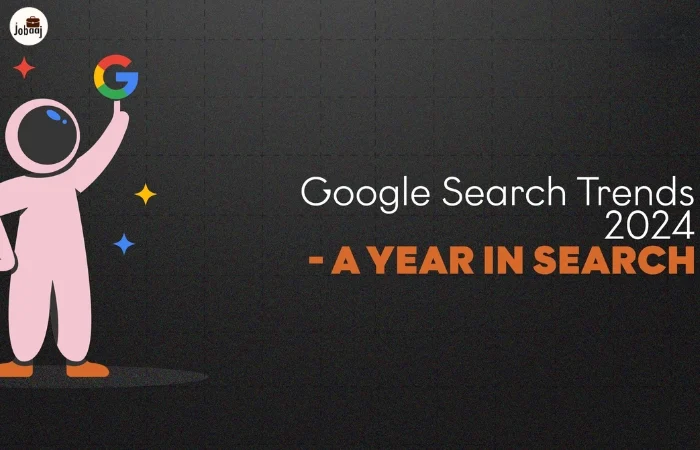In the rapidly evolving landscape of artificial intelligence (AI) and machine learning (ML), the process of data annotation has emerged as a cornerstone for developing sophisticated models that can interpret and interact with the world around us. As we delve deeper into the digital age, the significance of accurately labeled data cannot be overstressed.
Data annotation is not just a task; it is a critical foundation upon which the efficacy and reliability of AI and ML models are built. Whether it's enabling computers to distinguish between a cat and a dog, helping self-driving cars recognize road signs, or aiding in the diagnosis of diseases, data annotation provides the essential training ground for machines to learn from and adapt to their environment.
This blog post explores the multifaceted world of data annotation, shedding light on its importance, the various types it encompasses, and the challenges it presents in the quest to achieve AI success.
What is data annotation?
Data annotation is the process of adding relevant tags or labels to data, which can encompass various forms like text, images, audio, or video. These labels help computers comprehend and interpret the data effectively. Data annotation can be carried out either manually by humans or automatically, utilizing advanced machine learning techniques and tools.
In the context of supervised machine learning, having labeled datasets is of utmost importance. This is because machine learning models rely on these annotations to recognize patterns in the input data, allowing them to generate accurate results. Supervised machine learning models, as depicted, are trained using correctly annotated data and are particularly useful for addressing problems such as:
1. Classification: This involves categorizing test data into specific groups or classes. For instance, determining whether a patient has a particular disease and assigning their health data to categories like "disease" or "no disease" is a classic example of a classification problem.
2. Regression: In this case, the aim is to establish a relationship between dependent and independent variables. For instance, estimating the connection between an advertising budget and product sales is an illustration of a regression problem.
Why is it necessary?
Computers are indeed capable of delivering highly precise, relevant, and timely results. But how do machines achieve such efficiency? The key lies in the data annotation. During the development of machine learning modules, an extensive amount of AI training data is provided to enhance their ability to make informed decisions and recognize various objects or elements.
Data annotation is the essential process that enables these modules to distinguish between a cat and a dog, a noun and an adjective, or a road from a sidewalk. Without data annotation, every image would appear the same to machines because they lack inherent knowledge about the world.
Data annotation is a fundamental requirement to ensure that systems produce accurate results. It plays a crucial role in training computer vision and speech recognition models, allowing modules to identify and differentiate elements effectively. For any model or system that relies on machine-driven decision-making, data annotation is indispensable to ensure the accuracy and relevance of those decisions.
Data Annotation: What Are the Benefits?
Data annotation is essential for optimizing machine learning systems and enhancing user experiences. Below are some key advantages of data annotation:
1. Enhanced Training Effectiveness: Data labeling plays a pivotal role in improving the training of machine learning models, ultimately boosting their efficiency and generating more precise results.
2. Improved Accuracy: Precisely annotated data ensures that algorithms can adapt and learn effectively, leading to increased accuracy in subsequent tasks.
3. Decreased Human Involvement: Advanced data annotation tools substantially reduce the necessity for manual intervention, simplifying processes and cutting down on associated expenses.
In summary, data annotation contributes to the efficiency and precision of machine learning systems while also reducing the costs and manual labor traditionally associated with training AI models.
Types of Data Annotation
Data annotation encompasses various categories, including image, text, audio, and video. Let's delve into each of these categories for a more detailed understanding.
.webp)
Image Annotation
In image annotation, AI systems can swiftly and accurately distinguish different facial features, such as eyes, nose, eyebrows, and eyelashes, thanks to the datasets they've been trained on. This capability ensures that filters and enhancements align perfectly with an individual's face, regardless of its shape or proximity to the camera.
Image annotation is particularly crucial for applications involving facial recognition, computer vision, robotic vision, and more. During the training of such AI models, experts add captions, identifiers, and keywords as attributes to images. Algorithms then use these parameters to identify and autonomously learn from the data.
1. Image Classification: This involves assigning predefined categories or labels to images based on their content and training AI models to automatically recognize and categorize images.
2. Object Recognition/Detection: Object recognition, or object detection, entails identifying and labeling specific objects within an image, enabling AI models to locate and recognize objects in real-world images or videos.
3. Segmentation: Image segmentation divides an image into multiple segments or regions, each corresponding to a specific object or area of interest. This annotation type enables AI models to analyze images at a pixel level, enhancing object recognition and scene understanding.
Audio Annotation
Audio data presents even more complexity than image data, with various factors such as language, speaker demographics, dialects, mood, intent, emotion, and behavior. To efficiently process audio data, parameters like timestamping, audio labeling, and more are used to identify and tag these characteristics. This includes not only verbal cues but also non-verbal aspects like silence, breaths, and background noise, allowing systems to comprehend audio comprehensively.
Video Annotation
Video annotation involves annotating different objects in each frame of a video compilation by adding key points, polygons, or bounding boxes. These annotations, when stitched together, enable AI models to learn movement, behavior, patterns, and more. Video annotation is essential for implementing concepts like localization, motion blur, and object tracking in AI systems.
Text Annotation
Text-based data is widely used in businesses to gain unique insights and information. Text data is rich in semantics, with nuances like sarcasm, humor, and abstract elements that machines struggle to comprehend precisely. Text annotation involves several refined stages:
1. Semantic Annotation: This includes tagging and identifying keyphrases to make objects, products, and services more relevant. Chatbots, for example, use this approach to mimic human conversations.
2. Intent Annotation: Tagging the user's intention and language used in text to help machines differentiate between requests, commands, recommendations, and more.
3. Sentiment Annotation: labeling text with the sentiment it conveys, such as positive, negative, or neutral, which is commonly used in sentiment analysis to evaluate emotions expressed in text.
4. Entity Annotation: This involves tagging unstructured sentences to make them meaningful to machines. It encompasses named entity recognition and entity linking, which identify names of places, people, events, and organizations, and link them to sentences, phrases, facts, or opinions, establishing relationships between the text and surrounding statements.
Key Challenges in Data Annotation for Achieving AI Success
Data annotation plays a crucial role in the development and precision of AI and machine learning models. Nonetheless, the process comes with its own set of hurdles:
1. Annotating Data Costs: Data annotation can be carried out manually or through automated means. Manual annotation demands substantial effort, time, and resources, which can result in increased expenses. Ensuring data quality throughout the process also contributes to these costs.
2. Accuracy of Annotation: Human errors during data annotation can lead to subpar data quality, directly impacting the performance and predictions of AI and ML models. A Gartner study emphasizes that poor data quality can cost companies up to 15% of their revenue.
3. Scalability: With the increasing volume of data, the annotation process can become more intricate and time-consuming. Scaling data annotation while upholding quality and efficiency is a challenge for many organizations.
4. Data Privacy and Security: Annotating sensitive data, like personal information, medical records, or financial data, raises concerns regarding privacy and security. Ensuring that the annotation process complies with relevant data protection regulations and ethical guidelines is crucial to avoid legal and reputational risks.
5. Managing Diverse Data Types: Dealing with various data formats such as text, images, audio, and video can be demanding, particularly when different annotation techniques and expertise are required. Coordinating and managing the annotation process across these data types can be intricate and resource-intensive.
Organizations can identify and tackle these challenges to surmount the barriers associated with data annotation, thus enhancing the efficiency and effectiveness of their AI and machine learning initiatives.
In 2024, data annotation will remain a pivotal process for the development and accuracy of AI and machine learning models. This practice involves tagging or labeling data in various forms, including text, images, audio, and video, to enable machines to comprehend and interpret it effectively. Data annotation can be carried out manually by humans or automatically using advanced machine-learning techniques and tools.
The importance of data annotation in supervised machine learning is undeniable. Labeled datasets are vital for training AI models, allowing them to recognize patterns in input data and generate accurate results. Two core applications of data annotation are classification, which assigns predefined categories or labels to images, and regression, which establishes relationships between variables.
Join our free Workshops and to learn more tips and tricks, pin our page!








